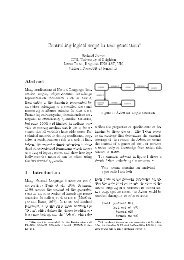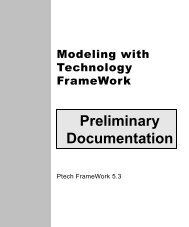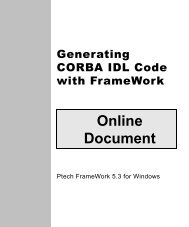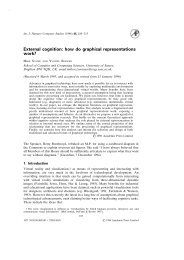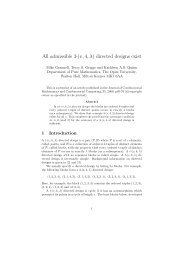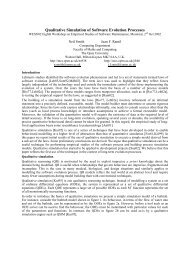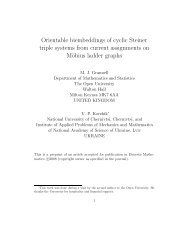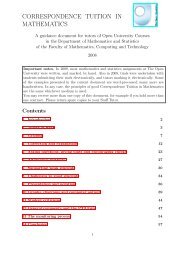Learning Technology FrameWork.pdf
Learning Technology FrameWork.pdf
Learning Technology FrameWork.pdf
Create successful ePaper yourself
Turn your PDF publications into a flip-book with our unique Google optimized e-Paper software.
Viewing classes using compartment notation<br />
Viewing classes using compartment<br />
notation<br />
Ways to show classes <strong>FrameWork</strong> provides two alternative notations for classes. Box<br />
notation, which you’ve been using to build your Java class<br />
diagram, displays a class as a box with the class name. The other<br />
notation, called compartment notation, shows a class as a set of<br />
three compartments and complies with the OMG UML 1.1<br />
suggested standard.<br />
Compartment notation When you view a class in compartment notation:<br />
Lesson 6: Adding More Detail to Your Java Classes<br />
102<br />
■ The top compartment shows the class name, which can be<br />
edited in place, just as it can in box notation.<br />
■ The middle compartment lists the attributes defined for the<br />
class. Each attribute name is preceded by a graphic indicating<br />
the attribute visibility and followed by the attribute data type.<br />
■ The bottom compartment lists the operations defined for the<br />
class. Each operation name is preceded by a graphic indicating<br />
the operation visibility and followed by the operation return<br />
type.<br />
Note<br />
Visibility is the property of an object that specifies the level<br />
of access other objects have to it.<br />
So far, you’ve viewed classes only in box notation. Now you’ll view<br />
them in compartment notation.




